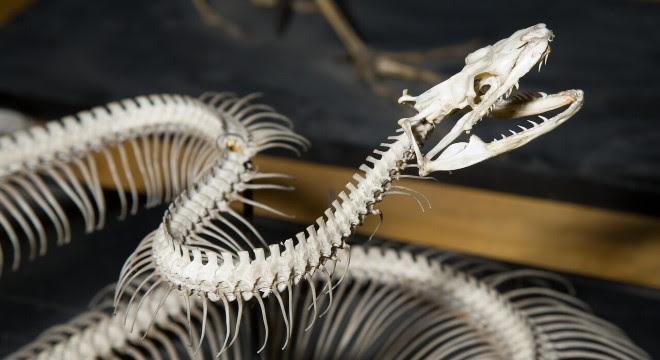Hello Grant Museum of Zoology fans! This winter we'll be turning the Museum into a giant game of Snakes & Ladders for our next UCL Culture Late. Discover how colonialism and Empire have shaped the museum's collections in our exhibition Displays of Power and come along to our free family workshops.
|
After-hours at the Grant Museum of Zoology
|
UCL Culture Late: Snakes & LaddersThursday 30 January, 6:30pm - 9pmTickets £8 / £5 concessions - Booking Required |
 |
Join an immersive game of Snakes & Ladders to the scale of the Grant Museum, coinciding with the exhibition Displays of Power. Will you be an explorer travelling in comfort or a guide who knows the terrain like the back of their hand? Either way, be prepared to encounter allies and obstacles in an adventure that will enlighten and amuse.
This January edition of UCL Culture Late is hosted by Sacha Coward, Escape Room Designer and Queer Folklorist, with a special guest appearance by poet Yomi Sode.
Book your tickets |
Exhibitions
|
Displays of Power: A Natural History of Empire19 Sep 2019 - 7 Mar 2020Open Monday - Saturday, 1pm - 5pm |
 |
Once you’ve seen how Empire shaped the Grant Museum collection, you’ll never look at natural history museums in the same way again.
When the practice of collecting animals for science was at its height, so was the British Empire. This free exhibition connects the specimens in the Grant Museum of Zoology to a wider history of science and Empire, by asking one simple question: “How did all these things come to be here in the first place?”
Come and see how historical teaching and research at UCL fits into the bigger picture of the history of science and imperial collecting in Britain and beyond. What part did UCL play in the international trade of living and dead animals? And how do colonial ways of working and thinking continue to affect the natural world today?
Find out more |
Family activities in the Grant Museum
|
|
|
More things to discover
|
 |
Meet our African Rock Python Skeleton
This massive snake arrived as a whole specimen in the 1960s, having died at London Zoo. When it reached the Museum a huge amount of work was required to remove the flesh in order to prepare the skeleton. Sadly the skin was in a poor condition and could not be preserved.
The specimen is from an African rock python Python sebae. Adults grow up to 6m in length, placing it in the top five longest snakes in the world, and the largest in Africa.
|


